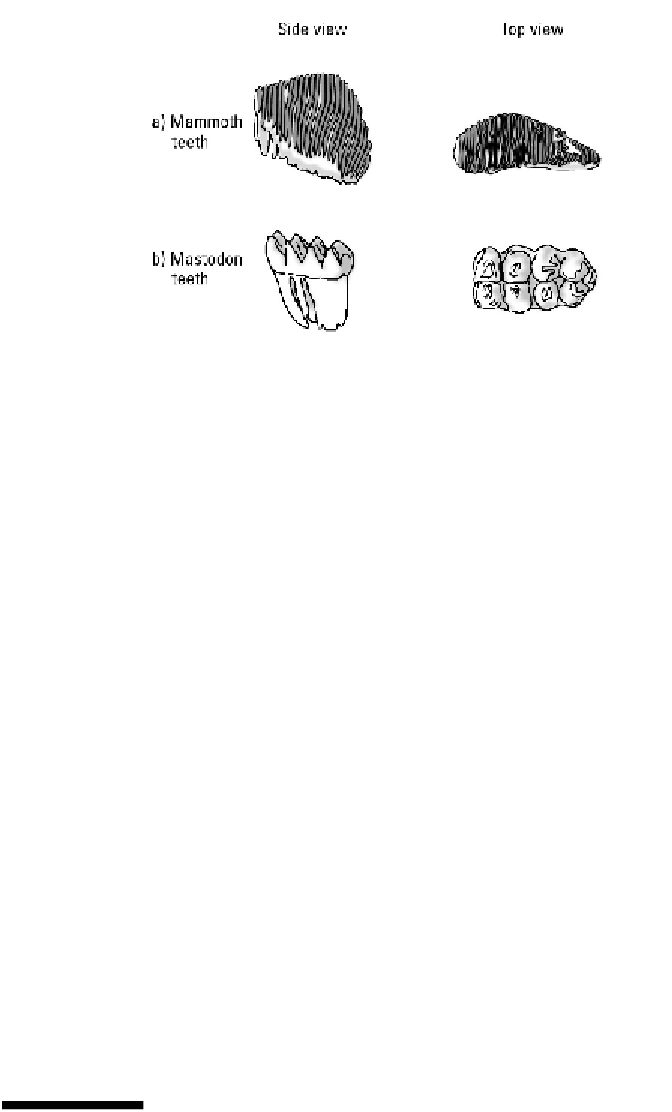Geology Reference
In-Depth Information
Figure 21-6:
Mam-
moth and masto-
don teeth.
These differences in teeth indicate that mammoths were adapted to eat grass, while
mastodons probably ate twigs and leaves from shrubs and trees. The teeth of modern
elephant species are flat, for grinding grasses, very similar to mammoth teeth.
Returning to the sea: Whales
While elephants are the largest modern animals on land, blue whales are the largest an-
imal ever — larger even than dinosaurs. Not all whales are as large as the blue whale,
but they all share an evolutionary history. And the story of whale evolution does not be-
gin in the ocean. As with all other mammals, the story of whales begins on land.
About 50 million years ago, a land-living mammal existed that scientists call
Pakicetus.
It
had some traits in common with land mammals and some in common with later whale
fossils. In particular, characteristics of its ear structure seem to indicate a transition
between other land mammals and later aquatic mammals (whales).
Scientists are still working to fill in the details of whale evolution through fossil and ge-
netic research. Some of the whale ancestors are shown in Figure 21-7 illustrating the
physical developments in the transition from land mammals to modern marine mam-
mals.
Figure 21-7:
Stages
in whale evolution
from land-dwelling





